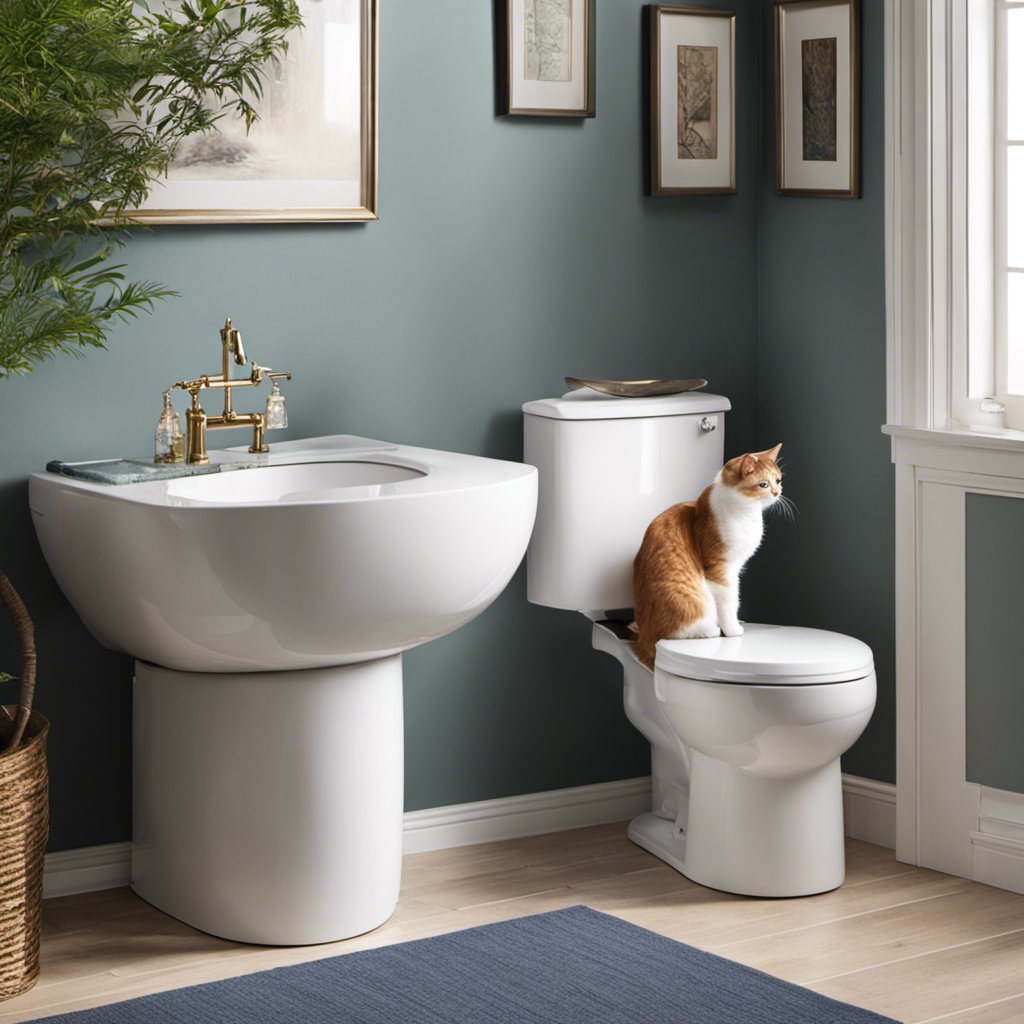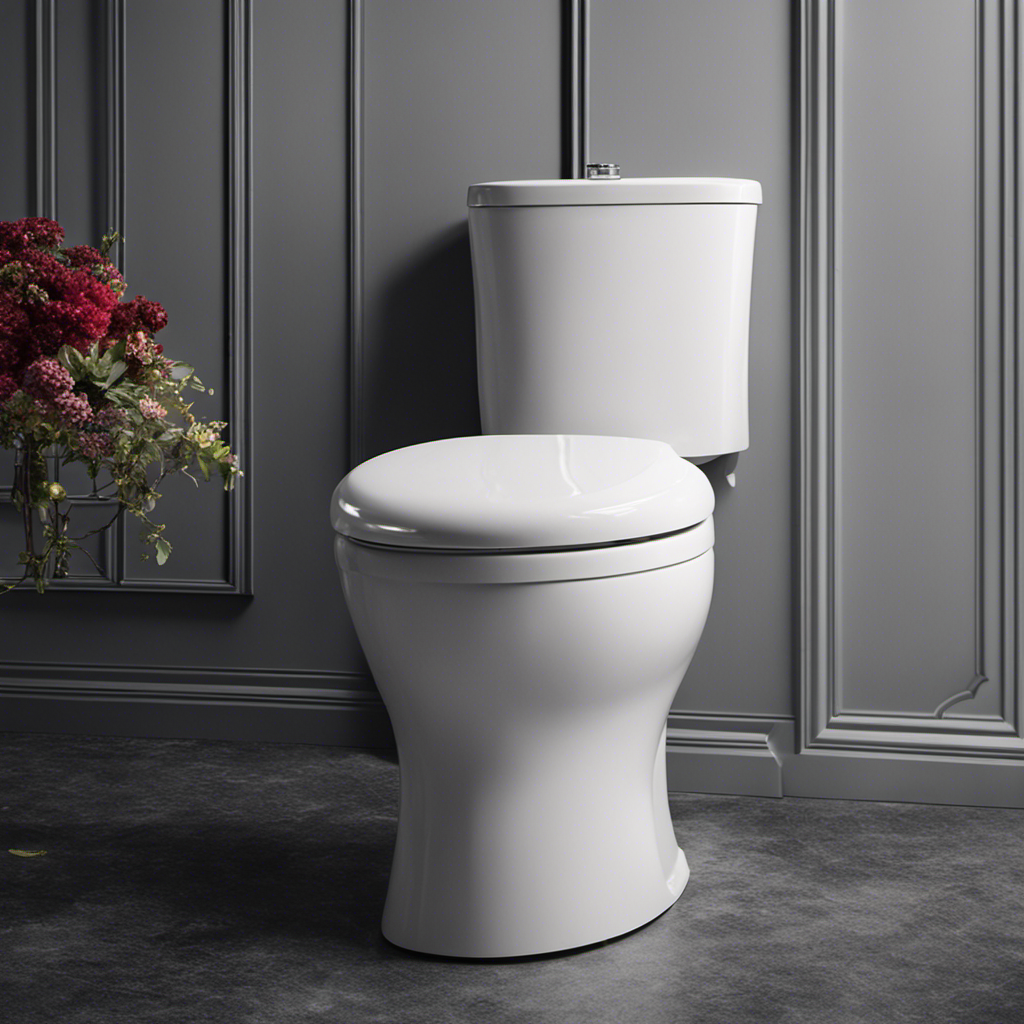I’ve always wondered about the origins of something as mundane yet essential as toilet paper. So, I delved into the fascinating history behind this everyday necessity.
Let’s explore the journey of toilet paper, from its early origins to its evolution in the modern era. As we uncover the truth about when toilet paper was invented, we’ll discover the impact it has had on society and the innovative ways it has evolved over time.
Get ready to dive into the intriguing world of toilet paper!
Key Takeaways
- Toilet paper was first recorded to be used in 6th century China during the Tang Dynasty, initially exclusively by emperors and the imperial court.
- Ancient cultures had diverse approaches to maintaining cleanliness, using materials such as bamboo, mulberry tree bark, sponges, leaves, moss, hay, and water.
- The production of toilet paper in ancient China was a highly skilled craft, with the sheets being soft, scented, and carefully crafted.
- Modern innovations in toilet paper include the use of bamboo for sustainability, bidets as an alternative to traditional paper, recycled toilet paper, and flushable wipes for convenience and cleanliness.
Early Origins of Toilet Paper
Toilet paper has been around since ancient times, but its early origins are still a subject of debate. While it is difficult to pinpoint its exact beginnings, evidence suggests that early manufacturing techniques for toilet paper varied across cultures.
In ancient China, for example, toilet paper was made from bamboo or mulberry tree bark. The bark would be soaked, boiled, and then pounded into thin sheets.
In ancient Rome, sponges soaked in saltwater were used instead of paper.
In medieval Europe, moss, leaves, or even hay were commonly used for personal hygiene.
These cultural differences in toilet paper use highlight the resourcefulness and adaptability of different societies throughout history.
The evolution of toilet paper manufacturing techniques and cultural practices surrounding its use are fascinating areas of study that shed light on the importance of sanitation throughout human civilization.
Ancient Civilizations and Toilet Hygiene
Ancient civilizations found innovative ways to maintain hygiene, using various materials for personal cleanliness. Toilet paper, as we know it today, was not commonly used during this time. Instead, different cultures had their own unique approaches to maintaining cleanliness after using the toilet.
For example, in ancient Rome, people used a sponge attached to a stick, known as a ‘tersorium,’ to clean themselves. This sponge was then rinsed in a bucket of water, which was shared by multiple people. In other cultures, such as ancient Egypt, people used a combination of water and their left hand to clean themselves.
The use of toilet paper alternatives varied greatly depending on cultural perspectives and available resources. These practices highlight the diverse ways in which ancient civilizations prioritized personal hygiene and cleanliness.
The First Recorded Use of Toilet Paper
If you were living in the 6th century, you would have been amazed by the first recorded use of a soft, comfortable material for personal cleanliness. The first documented evidence of toilet paper dates back to the 6th century in China, during the Tang Dynasty.
This historical significance highlights the early recognition of the importance of hygiene and sanitation. Here are some intriguing facts about this early form of toilet paper:
- The first recorded use of toilet paper in China was made from soft, scented, and carefully crafted paper.
- It was exclusively used by the emperors and the imperial court before eventually spreading to the general population.
- The sheets of toilet paper were even perfumed to enhance the overall experience.
- The production of toilet paper in ancient China was a highly skilled and secretive craft.
This early use of toilet paper showcases the innovative thinking and advanced civilization of ancient China.
Evolution and Innovation in Toilet Paper
When it comes to the evolution and innovation of toilet paper, there are three key aspects to consider: early toilet paper materials, toilet paper roll design, and modern toilet paper innovations.
In terms of early toilet paper materials, civilizations throughout history have used a variety of materials, including leaves, stones, and even corn cobs.
Additionally, the design of toilet paper rolls has changed significantly over time, with the introduction of perforated rolls in the late 19th century making it easier to tear off individual sheets.
Early Toilet Paper Materials
Cotton and hemp were commonly used as materials for early toilet paper. These natural fibers provided a soft and absorbent surface for personal hygiene purposes. Historical records show that toilet paper production dates back to ancient China, where it was first invented in the 6th century.
Here are some key points about early toilet paper materials:
- Cotton and hemp fibers were used due to their softness and absorbency.
- Other materials like grass, leaves, and even seashells were also used in different regions.
- The production of toilet paper was limited to the wealthy and elite.
- The widespread use of toilet paper only became common in the 19th century with the introduction of mass production techniques.
These early materials set the foundation for the development of modern toilet paper, which continues to evolve to this day.
Toilet Paper Roll Design
You can thank the inventors of the toilet paper roll design for the convenient and easy-to-use method of dispensing toilet paper.
Before the invention of the toilet paper roll, toilet paper was often sold in loose sheets or in large rolls that required cutting.
The introduction of the toilet paper roll design revolutionized the way we use and store toilet paper. The roll design consists of a cylindrical cardboard or plastic tube with a hole in the middle, allowing the toilet paper to be easily pulled and torn.
This design not only makes it easier to dispense toilet paper but also provides a neat and organized way to store it.
Today, toilet paper dispensers are commonly found in public restrooms and homes, ensuring that toilet paper is readily available and easily accessible to everyone.
Modern Toilet Paper Innovations
When it comes to modern toilet paper innovations, there have been some interesting alternatives to traditional toilet paper that have emerged in recent years. As people become more aware of the environmental concerns associated with toilet paper production and disposal, these alternatives aim to provide a more sustainable option.
Here are some noteworthy toilet paper alternatives:
-
Bamboo toilet paper: Made from fast-growing bamboo, this alternative is biodegradable and requires less water and chemicals to produce.
-
Bidets: Popular in many countries, bidets use water to clean instead of toilet paper, reducing the need for excessive paper usage.
-
Washable cloth wipes: These reusable wipes can be washed and reused, significantly reducing waste.
-
Toilet paper made from recycled materials: Some companies now offer toilet paper made from recycled paper, reducing the demand for virgin pulp.
These alternatives offer environmentally-friendly options for those seeking to reduce their impact on the planet while still maintaining good hygiene.
Toilet Paper in the Modern Era
Toilet paper has become an essential item in my everyday life, providing comfort and convenience. The manufacturing process of toilet paper involves cutting down trees, which raises concerns about its environmental impact. According to the Natural Resources Defense Council (NRDC), the production of toilet paper contributes to deforestation, habitat destruction, and water pollution.
Additionally, the bleaching process used to make toilet paper white releases harmful chemicals into the environment. However, it’s worth noting that some toilet paper brands are making efforts to reduce their environmental footprint by using recycled materials or sustainable sourcing practices.
Transitioning into the next section, it is important to consider the impact and importance of toilet paper in society. From its role in sanitation and hygiene to the various alternatives that are emerging in response to the environmental concerns associated with its production.
Impact and Importance of Toilet Paper in Society
The impact and importance of toilet paper in society cannot be underestimated, as it plays a crucial role in promoting cleanliness and preventing the spread of diseases. Toilet paper has become an essential product in our daily lives, but recent events have highlighted its scarcity and the potential environmental impact it has.
Toilet paper shortage: The COVID-19 pandemic led to panic buying and hoarding of toilet paper, causing shortages in many places. This highlighted the reliance and necessity of toilet paper in our society.
Environmental impact: The production and disposal of toilet paper have a significant impact on the environment. The manufacturing process involves cutting down trees, using water and energy resources, and producing waste. Additionally, the disposal of toilet paper contributes to landfill waste and sewage system issues.
Sustainable alternatives: Many individuals and organizations are advocating for sustainable alternatives to traditional toilet paper, such as recycled or bamboo toilet paper. These alternatives aim to reduce the environmental impact while still maintaining hygiene standards.
Hygiene and health: Toilet paper plays a vital role in maintaining personal hygiene and preventing the spread of diseases. It helps in cleaning and drying after using the toilet, reducing the risk of bacterial or viral contamination.
Frequently Asked Questions
How Did People Clean Themselves After Using the Toilet Before the Invention of Toilet Paper?
Before the invention of toilet paper, people used various methods to clean themselves after using the toilet. This included the use of water, such as bidet usage, as well as cultural variations like leaves, corn cobs, or even stones.
What Materials Were Commonly Used as Substitutes for Toilet Paper in Ancient Civilizations?
Ironically, ancient civilizations had a wide array of options when it came to substituting toilet paper. Leaves, stones, and even seashells were commonly used. It’s fascinating how resourceful people were before the invention of modern amenities.
When and Where Was the First Commercially-Produced Toilet Paper Introduced?
Commercially produced toilet paper was introduced in the late 19th century. Its availability greatly improved hygiene and sanitation practices. Advertising and marketing campaigns played a significant role in promoting toilet paper usage and changing societal norms.
How Has Toilet Paper Manufacturing Evolved Over the Years to Meet Increasing Demand?
Toilet paper production techniques have evolved over the years to meet increasing demand. It’s like a well-oiled machine, constantly adapting and improving. However, we must also consider the environmental impact of toilet paper manufacturing and find sustainable alternatives.
What Are Some Alternative Options to Traditional Toilet Paper Available in the Modern Era?
There are several eco-friendly options and bidet alternatives available in the modern era. They provide sustainable alternatives to traditional toilet paper and help reduce waste and environmental impact.
Conclusion
In conclusion, the invention of toilet paper has revolutionized our lives in ways we may not even realize.
From its early origins in ancient civilizations to its evolution and innovation in the modern era, toilet paper has become an essential part of our daily hygiene routine.
Its impact on society cannot be understated, as it has brought comfort, cleanliness, and convenience to millions around the world.
Like a soft cloud descending upon us, toilet paper has truly changed the way we experience the world.










